A scorecard displays informational data such as sales performance. This gives you a quick overview of your business. scorecards can be used to monitor the health of your business in real time and identify issues in your business processes. Therefore, a scorecard is one of the effective ways to detect and resolve issues. This topic describes how to configure a scorecard, including the data to be displayed on the scorecard and the style of the scorecard.
Prerequisites
A dashboard is created. For more information, see Create a dashboard.
Limits
When you create a scorecard, you must specify Labels (Dim.) and Metrics (Mea.).
You can specify only one dimension for Labels (Dim.), such as area.
You can specify 1 to 20 measures for Metrics (Mea.), such as order_number and order_amt.
Overview
Scenario
A scorecard is used to display one or more measures in a dimension, especially in scenarios in which accurate numbers need to be displayed for metrics.
Benefits
Computing capabilities: You can configure the comparison and advanced calculation features with a few clicks.
Visualization: You can add icons and logos to scorecards, use custom backgrounds, and adjust styles such as the font size and color.
Various interactive options: You can add custom remarks or comments to scorecards. You can also add links to scorecards to interact with external systems.
Renderings
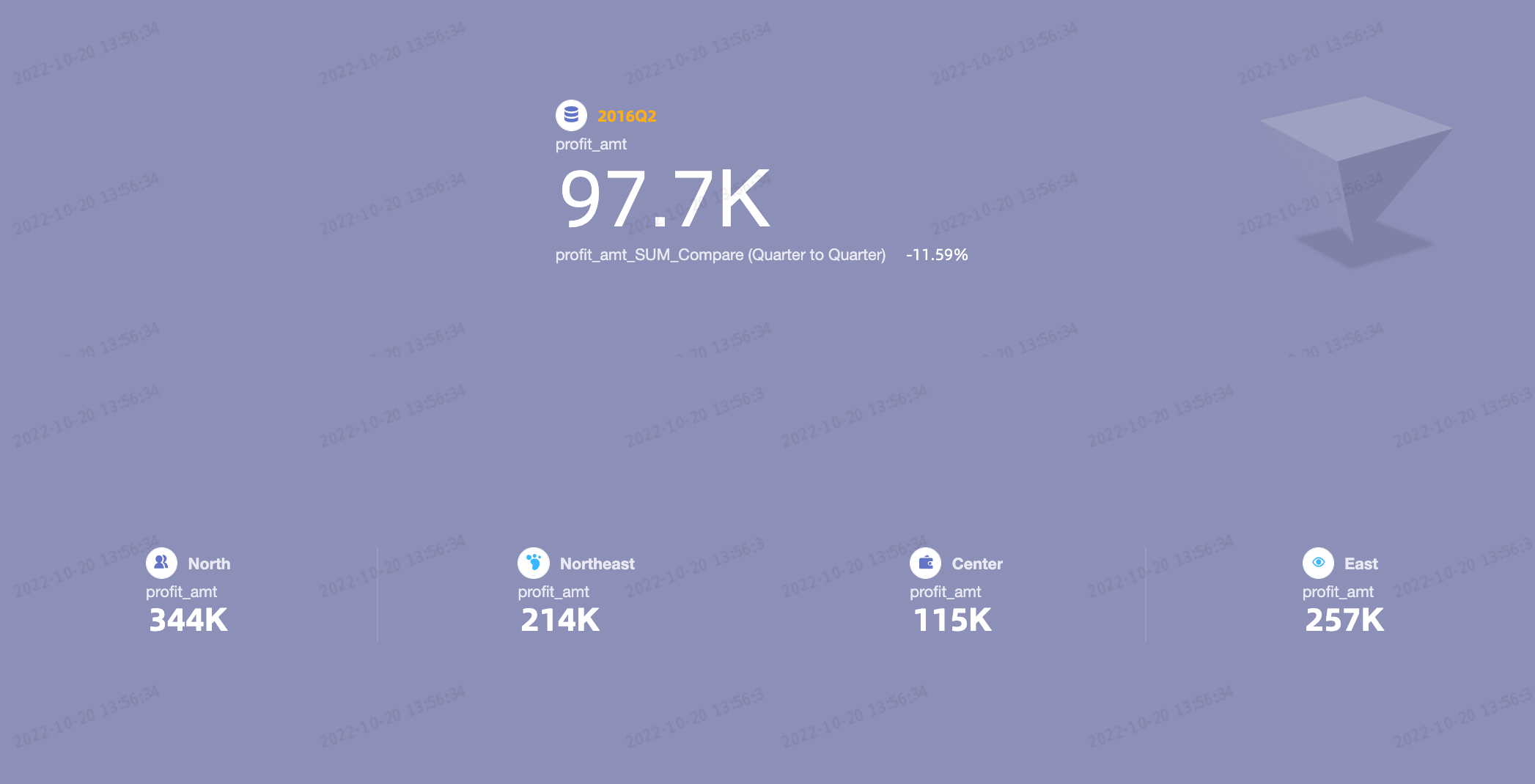
Configure a scorecard
On the Field tab, select a dimension and one or more measures based on your requirements.
In the Dimension list, double-click a dimension or drag this dimension to the Labels (Dim.) section.
In the Measures list, double-click orderrate, shipping cost, and profitrate. You can also drag these measures to the Metrics (Mea.) field.
NoteIn the Metrics (Mea.) section, the first measure is the primary measure. You can rearrange the measures in the Metrics (Mea.) section to change the primary measure.
Click Update to create the LBS heat map.
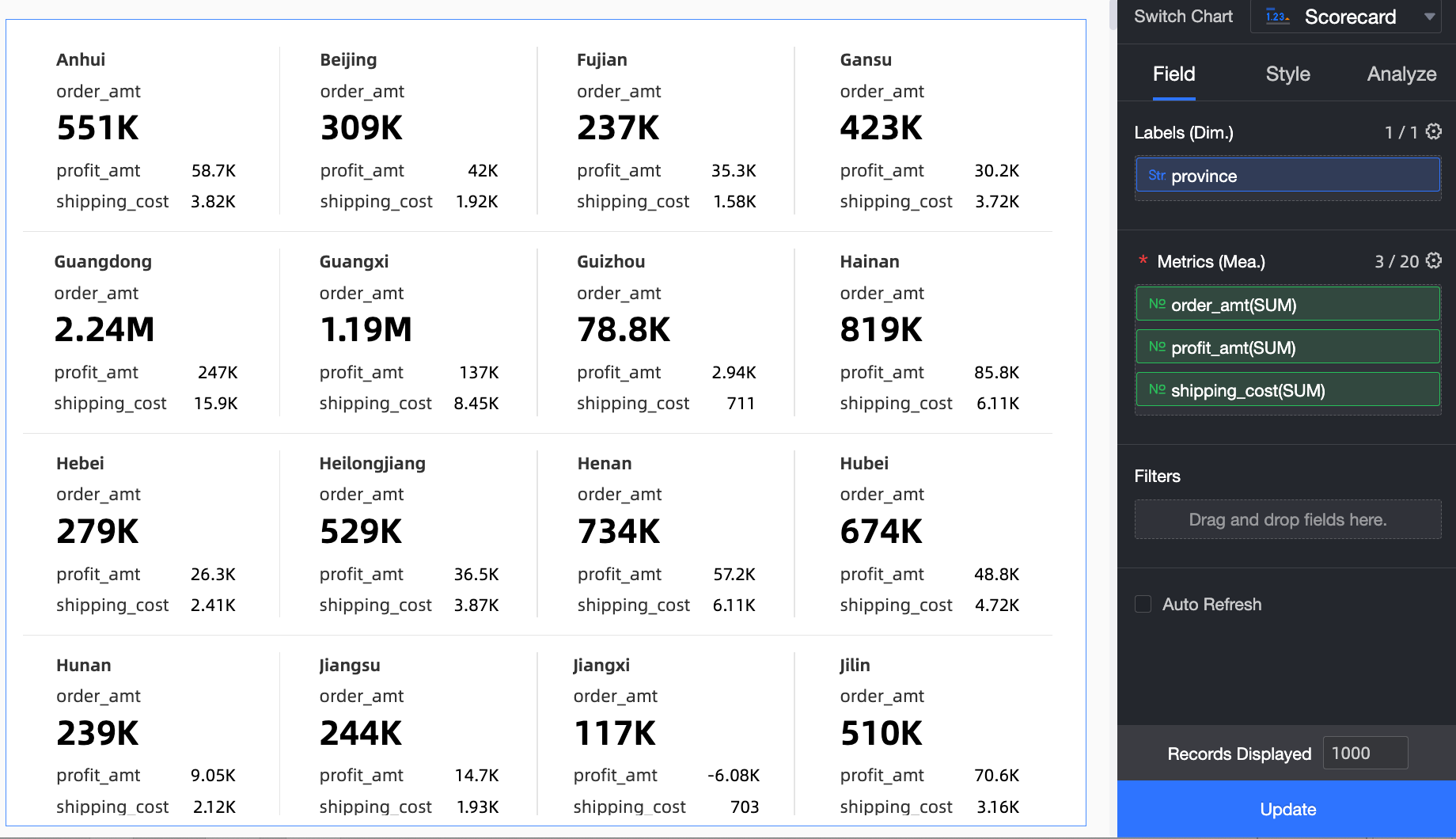
Configure the style of a scorecard
This section describes how to configure the style of a scorecard. For more information about how to configure common chart styles, see Parameters in the Style tab.
You can enter a keyword in the search box at the top of the configuration section to search for configuration items. You can also click ![]() Expand /Collapse All Categories in the right-side chart.
Expand /Collapse All Categories in the right-side chart.
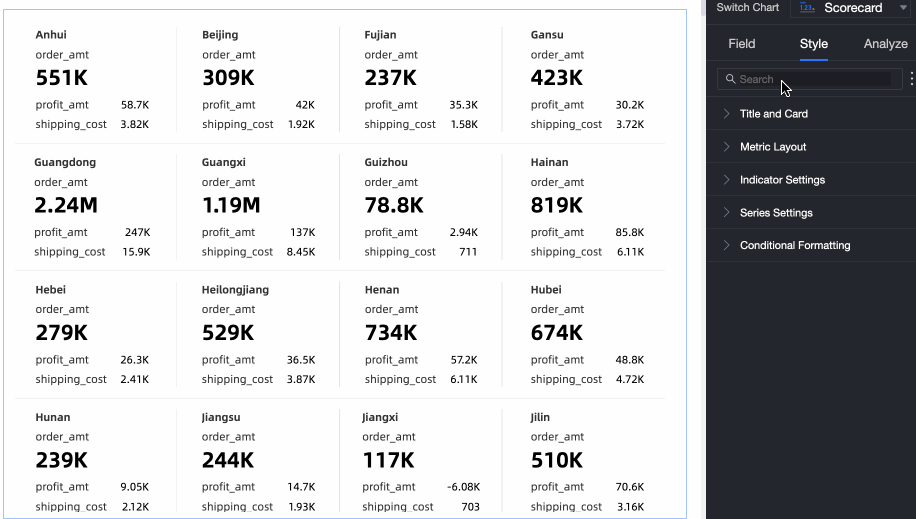
In the Indicator Layout section, configure the layout style of the indicator block.
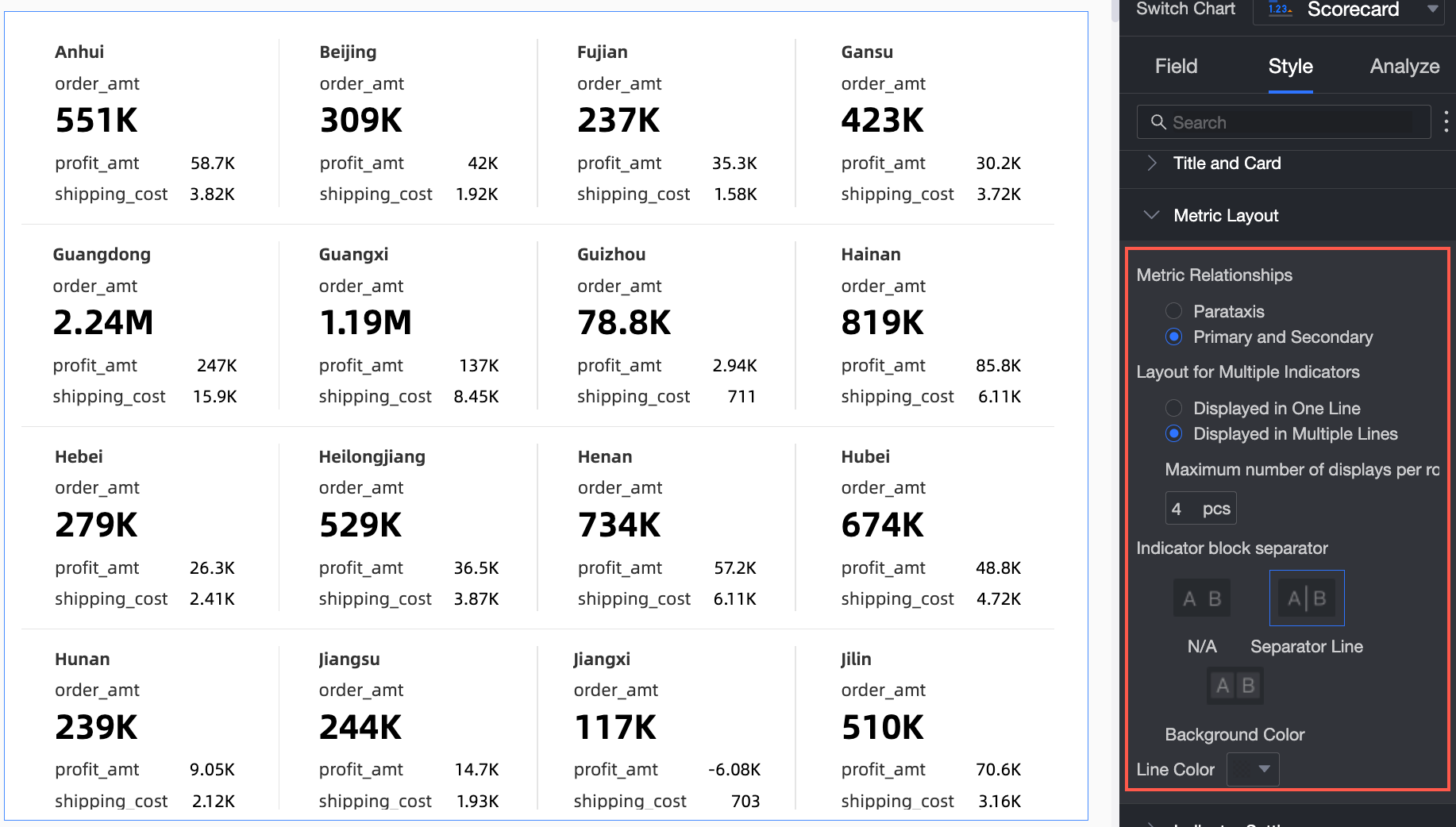
Chart configuration items
Description
Relationship between metrics
You can select Parallel or Primary /Secondary.
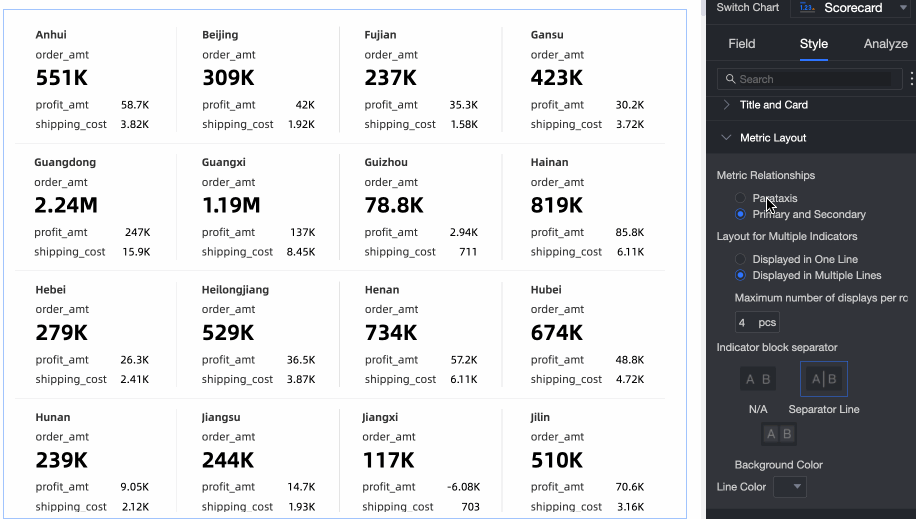
Metric Block Group
Slide and Line feed are supported. At the same time, you can set the number of each row indicator block on the scorecard.

Metric Block Segmentation
None, line separator, and background padding are supported. In line separator mode, you can set the color of the line separator. In Background Fill mode, you can set the background color and spacing of the indicator block.
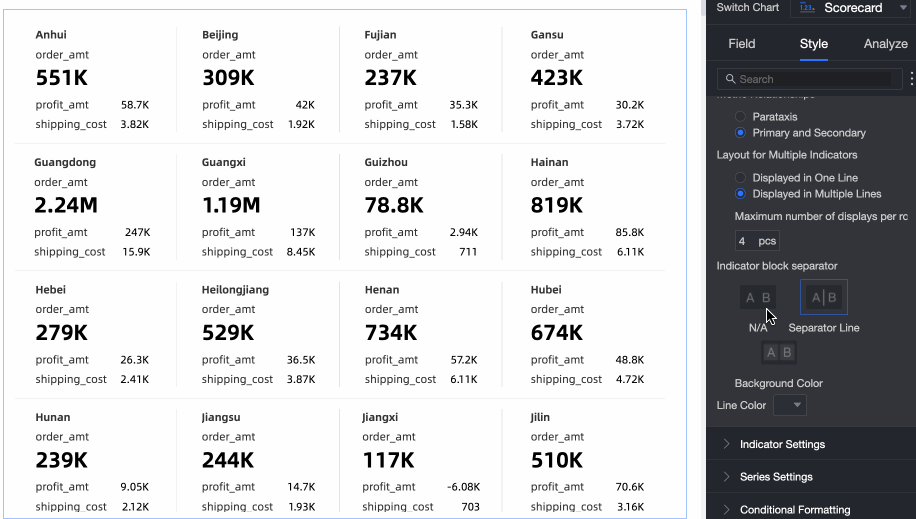
In the Indicator Content section, configure the Content Position, Display Mode, Font Size, and Indicator Style parameters.
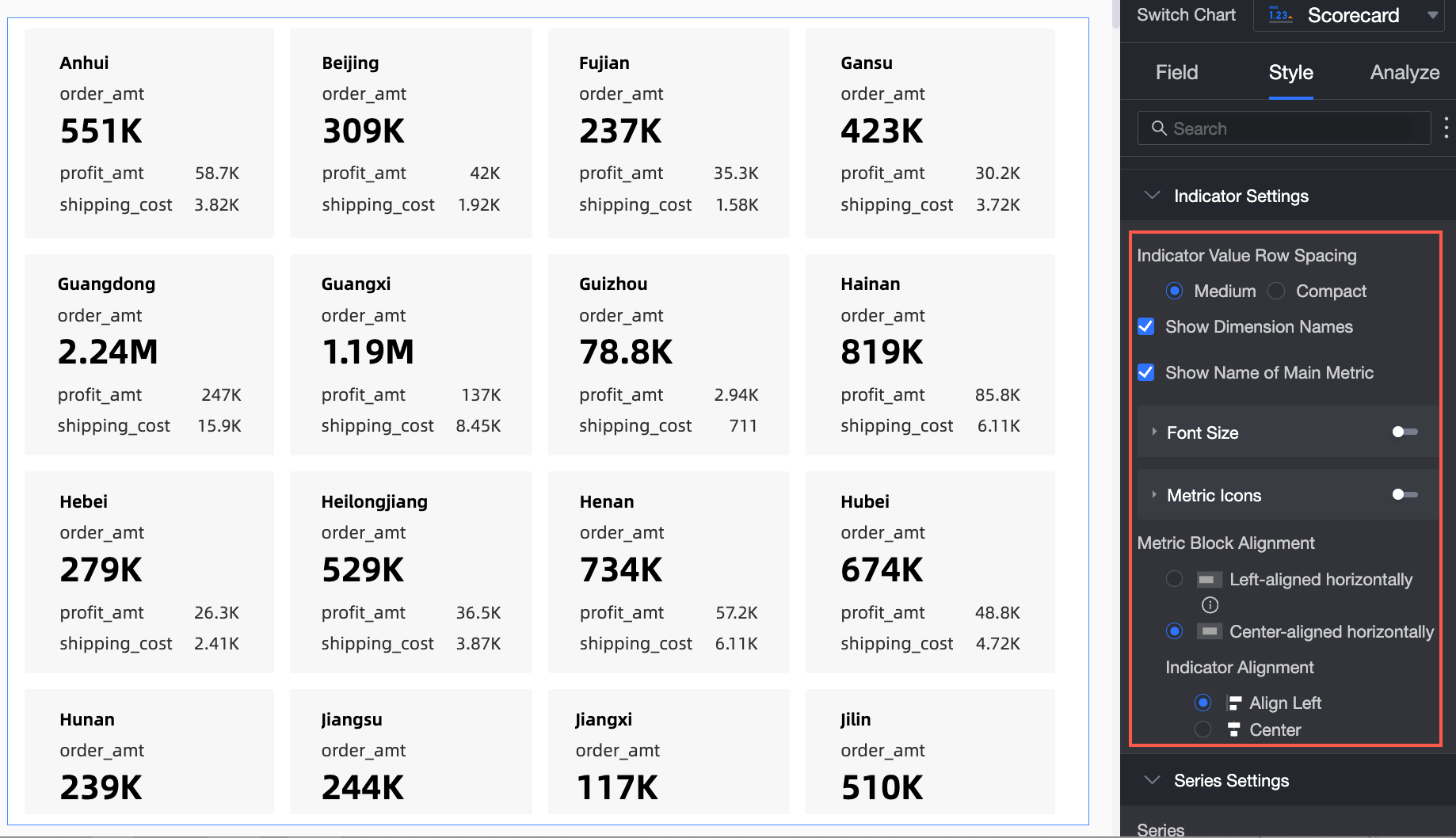
Chart configuration items
Description
Indicator Value Row Spacing
Moderate and Compact are supported.
Show Dimension Names
Specify whether to display the name of the dimension on the scorecard.
Display Primary Metric Name
Set whether to display the name of the main indicator in the scorecard.
Font Size
Select Enable Font Size. After you enable Font Size, you can specify the Dimension Name, Primary Metric Name, Primary Metric Value, Secondary Metric Name, and Secondary Metric Value Font Size, Color, Bold, and Italic parameters.
NoteIn the Metrics (Mea.) section, the first measure is the primary measure. The rest measures are secondary measures.
Indicator Modifier Chart
Select Show Main Indicator Decorated Chart. After you select Show, you can set the Decorated Chart Position, Color, Decorated Chart Type, and Graphic Style parameters.
You can select Left or Top in the Modifier Position field.
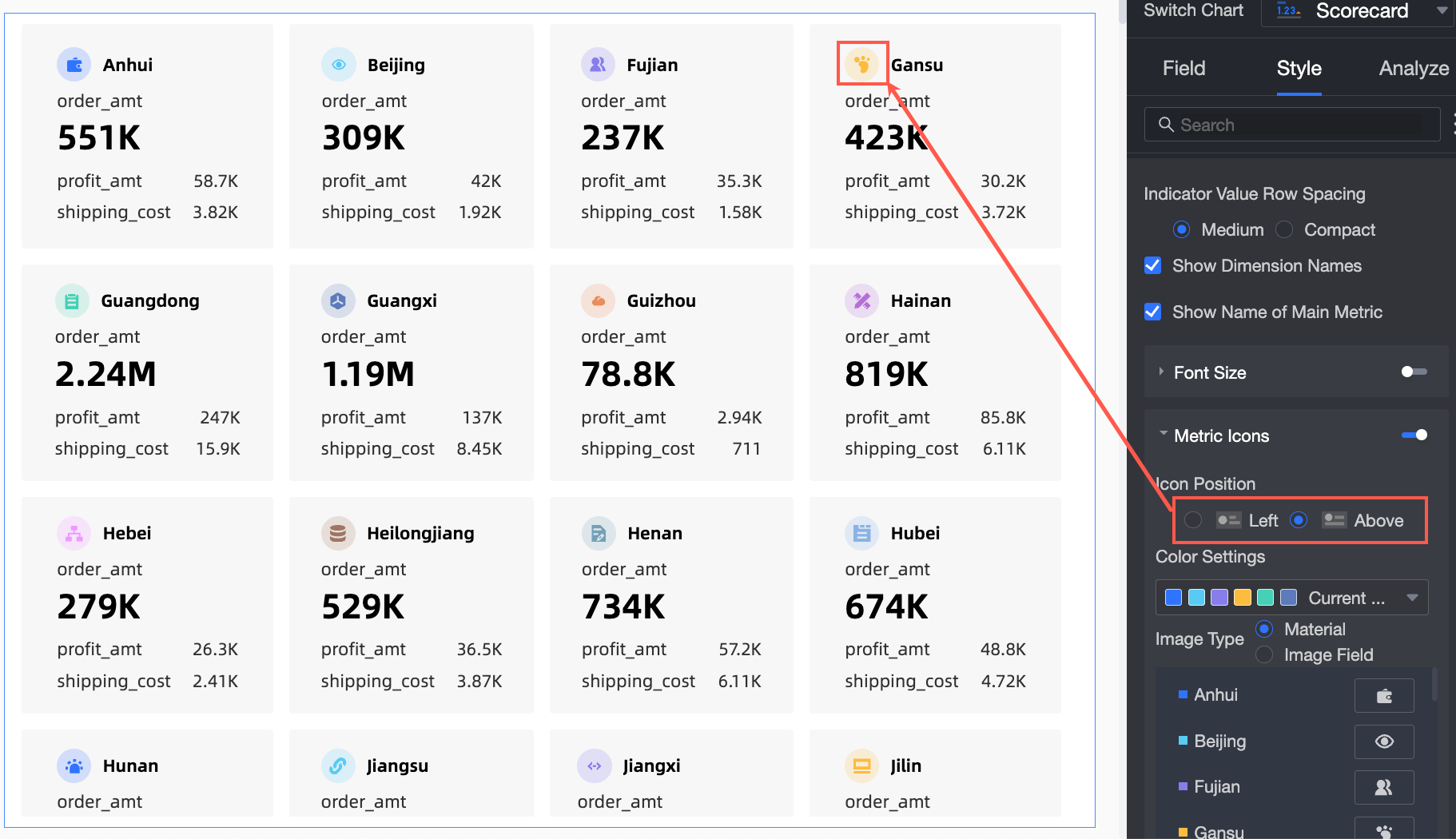
In the Color Settings section, you can set the Color parameter for the indicator.
You can use Material or Image Field to modify the figure type.
The Image Field parameter is available only when the dataset contains Image Field and the field type is
 .
. When you select a material, you can use the material icon or upload a local image.
NoteOnly images in the PNG, JPG, and GIF formats are supported. The maximum size is 1 MB.

Pattern supports Transmit and Solid.
Content position in indicator block
Specify the position of the content in the metric block. You can select Left or Center. In the Horizontal Center section, set Alignment to Left and Center.

In the Conditional Formatting section, configure conditional formats for measures.
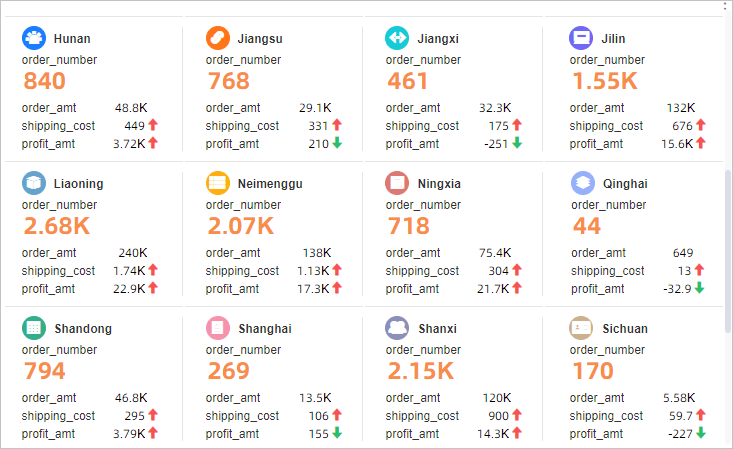
Chart configuration items
Description
Series
Select a measure that you added to the Metrics (Mea.) field.
Shortcut Style
Configure the marker icons and font colors.
Custom Style
Customize text, icon style, marker icons, range values, and font colors.
Synchronize Style To
Replicate the conditional formatting settings of a measure to other measures.
In the Series Settings section, configure Series and Prefix and Suffix for Data Value.
Chart configuration items
Description
Series
The series. You can select a measure that you added to the Metrics (Mea.) field.
Prefix and Suffix for Data Value
The prefix and suffix of a value.
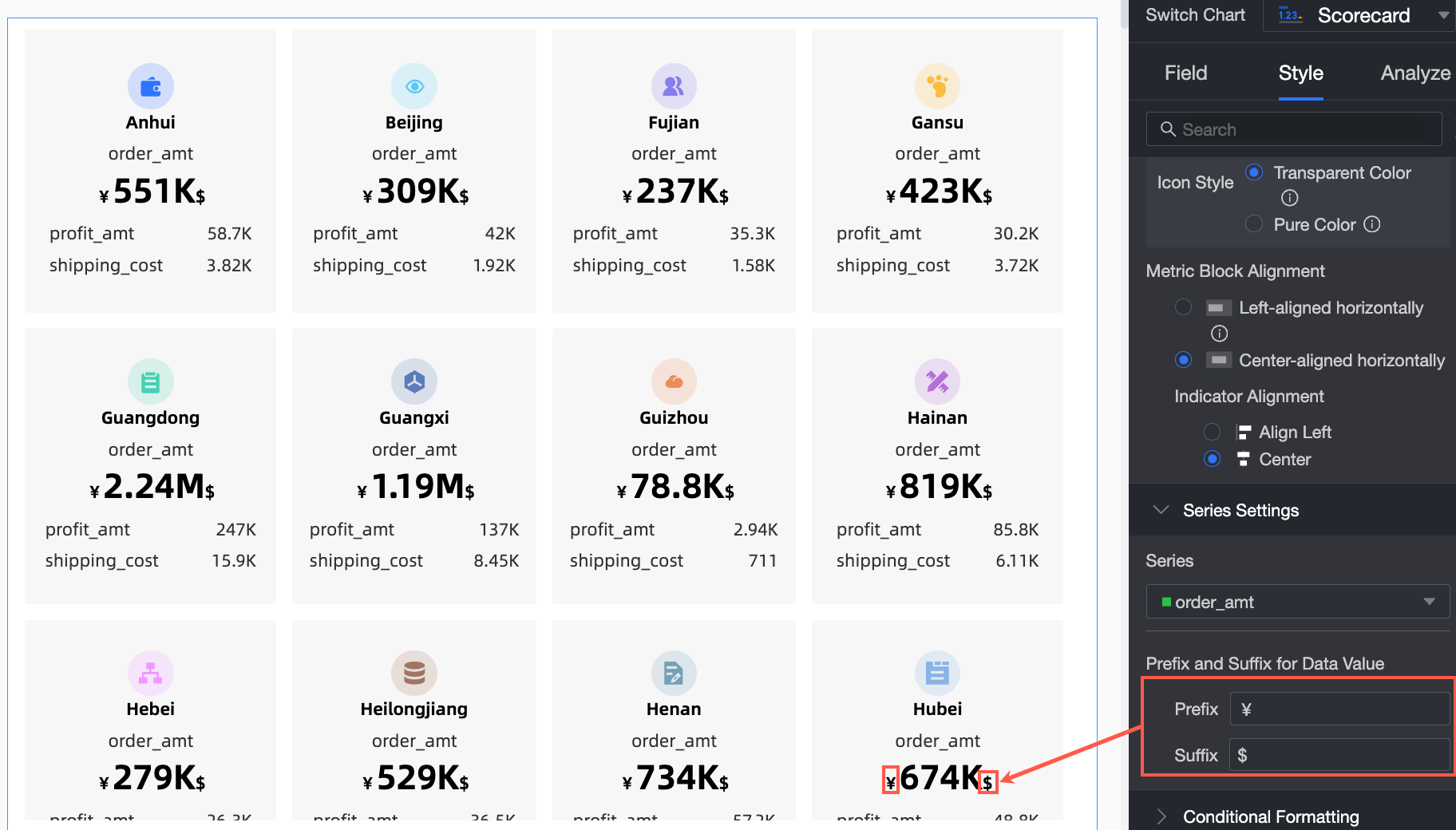
Chart analysis configuration
Parameter | Item | Description |
Data interaction | Linkage | If the data that you want to analyze belongs to different charts or tables, you can configure this feature to associate the charts and tables, and then analyze the data. For more information, see Linkage. |
Hyperlink | If the data that you want to analyze belongs to different dashboards, you can configure this feature to associate the dashboards and then analyze the data. You can use one of the following methods to redirect data: In-product Redirection, On-page Components, and External Links. For more information, see Redirection. |
What to do next
You can share your dashboard with others. For more information, see Share a dashboard.
If you want to create a navigation menu for thematic analysis, you can integrate your dashboard into a business intelligence (BI) portal. For more information, see Create a BI portal.